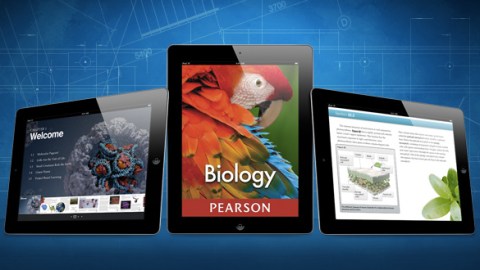Enhanced E-Books and the Pride of the Publishing Industry

The title of the Wall Street Journal‘s recent article on enhanced e-books—”Blowing Up the Book”—strikes me as an appropriate blend of the exciting and the ominous. (See also: “Kindle Fire.”) The format is a wide-open field of creative possibilities with one or two landmines waiting underneath.
There are whole categories of books for which multimedia extras would be an obvious advantage. You can cite, or imagine, examples as easily as I can: cookbooks with instructional videos, geometry textbooks with interactive 3-D diagrams, and so on. In principle, the enhanced book is as old as the illustrated book, and the rich sensory universe of children’s books in particular—remember scratch-and-sniff? pop-ups? Pat the Bunny?—speaks to the concept’s deep-rooted appeal. Digital technology is simply taking it a logical step forward.
For example, the “Waste Land app” described in the Journal makes perfect sense, up to a point. As an updated version of the scholarly apparatus that often surrounds literary texts, it promises to “enhance” as long as it privileges the text itself and keeps the special features in the background. That said, this sentence worries me a little:
The app, priced at $13.99, hit No. 1 on Apple’s list of best-selling book apps, prompting hope among publishers that literature can hold its own in the app world.
What about hoping apps can hold their own in the literary world? Does T.S. Eliot really have to plead for his legacy at the feet of Steve Jobs?
Fortunately not all publishers share this inferiority complex. Open Road Media CEO Jane Friedman tells the Journal: “The consumer is not asking for this. It takes it from being a reading experience to something else, and we are publishers.” I think she draws too bright a line, but her general point is well taken. Rushing to turn all books—or even all e-books—into multimedia experiences would not only be a kind of cultural capitulation (“Americans no longer have the patience for plain old novels”), it would be a losing marketing strategy. It would reek of desperation and risk insulting readers’ intelligence. And yes, it would play to the strengths of other media rather than those unique to books. Few movies try to boost their entertainment value by interspersing segments of static text; why assume, then, that any text can be improved by a video?
A few years ago, while blogging for art book publisher Abbeville Press, I wrote the following:
Is [the enhanced e-book] a concept worth celebrating? Absolutely. No medium is inherently good or bad to begin with—it’s content that counts; and in the case of this medium, there really are whole new worlds to be explored. But the question arises: must all e-books follow this pattern? Is every text best served by this kind of multimedia piling-on?…
Our industry seems increasingly to feel embarrassed about traditional books, as though they were stodgy and outmoded and better disguised as newer, more popular media…[But] while the e-book presents formal possibilities that are well worth exploring, not every e-book has to reinvent the wheel—and not every publisher should scramble to produce the kind that do, or even to produce e-books at all. Right now it’s at least as important for publishers to recognize what writing and illustration can do that other media cannot; to cultivate excellence in those areas; and to share that excellence with readers as part of a marketing strategy based not on insecurity but legitimate pride.
I stand by that sentiment, and I hope that publishers, even as they diversify, will stand by their core product as well.
[Image courtesy iTunes Store.]





